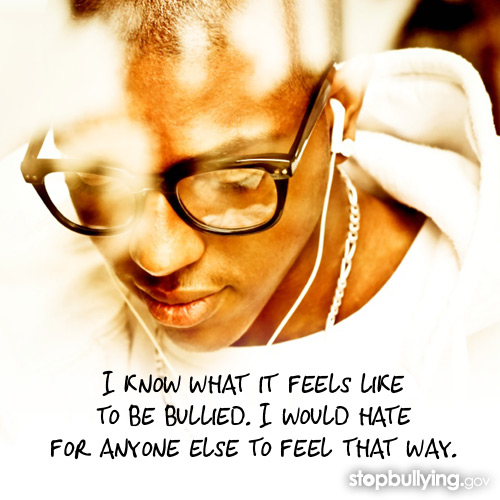
There are three types of bullying, they are:
- Verbal
- Social
- Physical
VERBAL BULLYING IS SAYING/WRITING MEAN THINGS. VERBAL BULLYING INCLUDES:
- Teasing
- Inappropriate sexual comments
- Taunting
- Threatening to cause harm
SOCIAL BULLYING, SOMETIMES REFERRED TO AS RELATIONAL BULLYING, INVOLVES
HURTING SOMEONE'S REPUTATION OR RELATIONSHIPS. SOCIAL BULLYING INCLUDES:
- Leaving someone out on purpose
- Telling other children not to be friends with someone
- Spreading rumors about someone
- Embarrassing someone in public
PHYSICAL BULLYING INVOLVES HURTING A PERSON'S BODY OR POSSESSIONS.
PHYSICAL BULLYING INCLUDES:
- Hitting/kicking/pinching
- Spitting
- Tripping/pushing
- Taking or breaking someone's things
- Making mean or rude hand gestures
FREQUENCY OF BULLYING:
Two sources of federally collected data on youth bullying:
- 2010-2011 school crime supplement indicates that, nationwide, 28% of students in grades
6-12 experienced bullying. - 2013 youth risk behavior system indicates that, nationwide, 20% of students in grades 9-12
experienced bullying.
KIDS INVOLVED IN BULLYING:
The roles kids play in bullying are not limited to those who bully others and those who are bullied.
Some researchers talk about the "circle of bullying" to define both those directly involved in bullying
and those who actively or passively assist the behavior or defend against it. Direct roles include:
KIDS WHO BULLY:
- Engage in bullying behavior towards their peers.
- Many risk factors may contribute to the child's involvement in the behavior.
- Often require support to change their behavior, and address any other challenges
that may be influencing their behavior.
KIDS WHO ARE BULLIED:
- Targets of bullying behavior.
- Sometimes, these children need help learning how to respond to bullying.
- Some factors make them targets, but not always.
KIDS WHO ASSIST:
- May not start the bullying or lead in the behavior.
- Lead as an "assistant".
- Encourage the bullying behavior, and occasionally join in.
KIDS WHO REINFORCE:
- Not directly involved.
- Provide audience for bully's.
- Often laugh or provide support for the bully.
OUTSIDERS:
- Remain separate from the bullying situation
- Neither reinforce, nor defend the child being bullied.
- Do not provide feedback about the situation to show they are on anyone's side.
- Still may encourage bullying behavior.
- Often want to help, but don't know how.
KIDS WHO DEFEND:
- Actively comfort the child being bullied.
- May come to the child's defense when bullying occurs.
WHO IS AT RISK:
RISK FACTORS:
- No single factor puts a child at risk of being bullied or bullying others.
- Depending on the environment, some groups - such as lesbian, gay, bisexual, or
transgendered youth, youth with disabilities, and socially isolated youth - may be at
an increased risk of being bullied.
CHILDREN AT RISK OF BEING BULLIED:
- Are perceived as different.
- Are perceived as weak or unable to defend themselves.
- Are depressed, anxious, or have low self-esteem.
- Are less popular than others and have few friends.
- Do not get along well with others, seen as annoying or provoking, or
antagonize others for attention.
CHILDREN MORE LIKELY TO BULLY OTHERS:
Two types of kids who are more likely to bully others:
First Type:
- Well connected to their peers.
- Has social power.
- Overly concerned about their popularity.
- Likes to dominate or be in charge of others.
Second Type:
- More isolated from their peers.
- Depressed or anxious.
- Has low self-esteem.
- Less involved in school
- Easily pressured by peers.
- Does not identify with the emotions or feelings of others.
CHILDREN WHO HAVE THESE FACTORS ARE ALSO MORE LIKELY TO BULLY OTHERS:
- Aggressive or easily frustrated.
- Has less parental involvement or having issues at home.
- Thinks badly of others.
- Has difficulty following rules.
- Has friends who bully others.
Remember, those who bully others do not need to be stronger or bigger than
those they bully. The power imbalance can come from a number of sources - popularity,
strength, cognitive ability - and children who bully may have more than of
these characteristics.